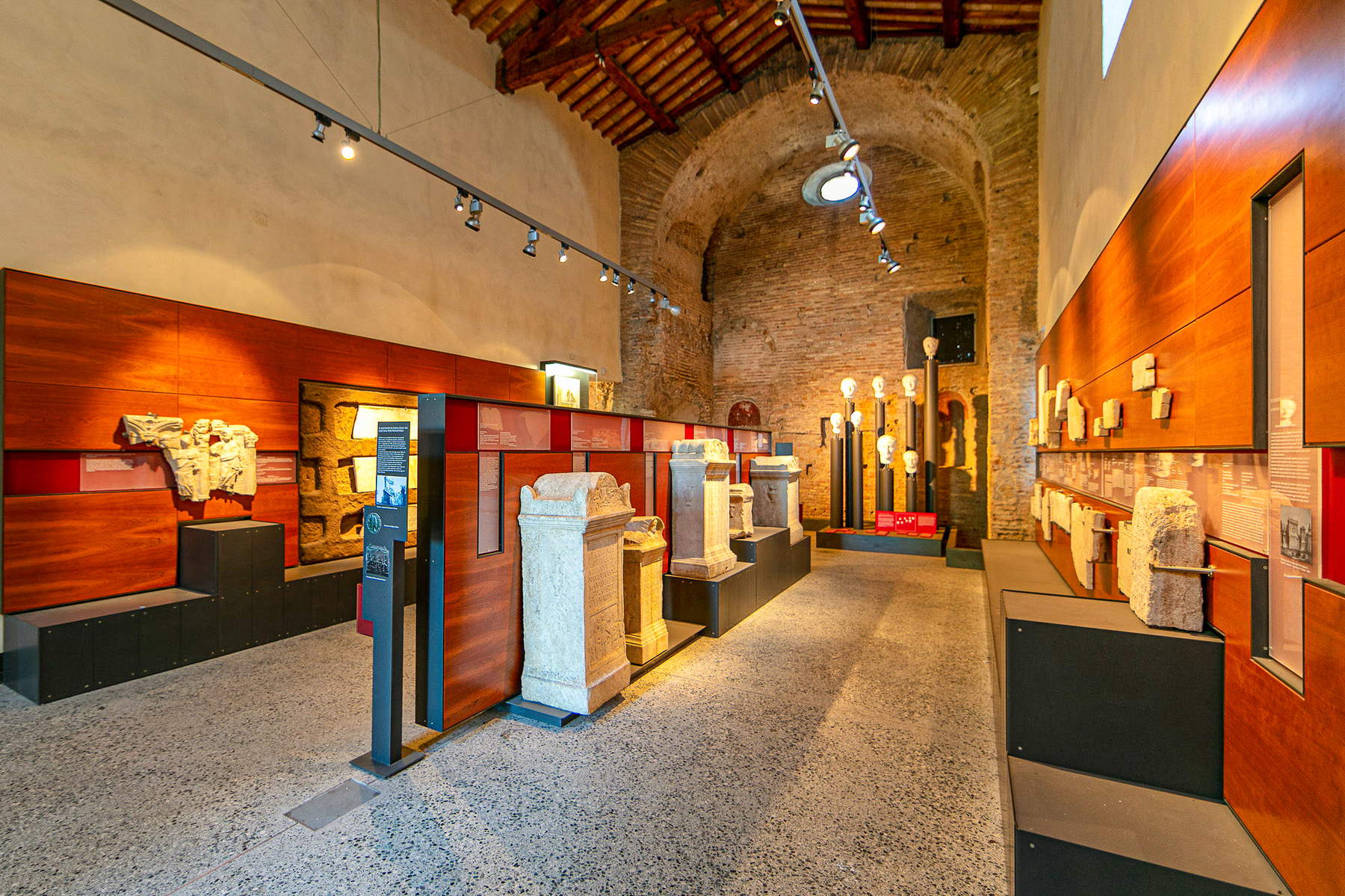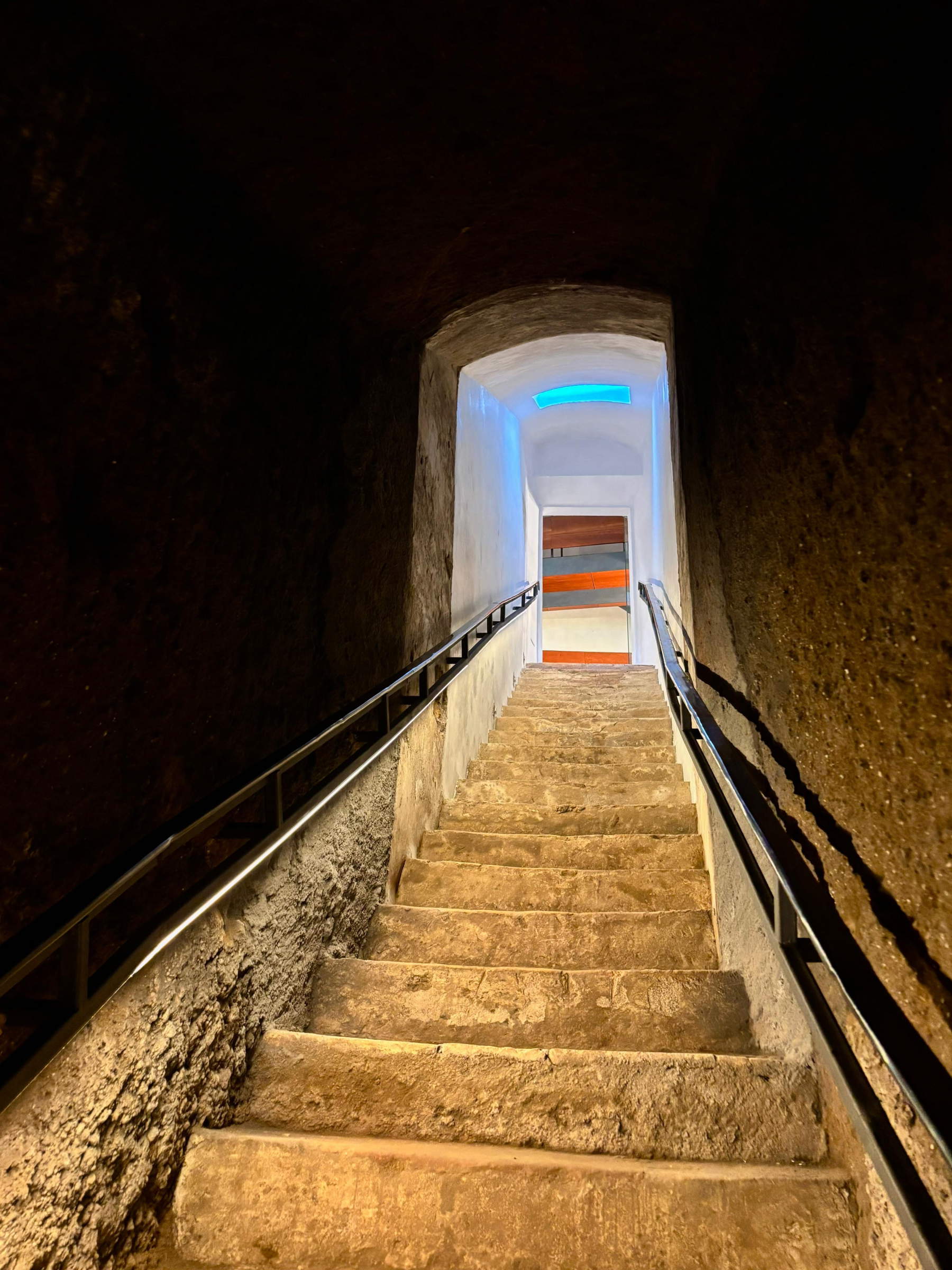The Mausoleum of St. Helena and the Catacombs of Saints Marcellinus and Peter in Rome are expanding their visit possibilities thanks to a major restoration and enhancement project that also includes the reopening of the ancient underground passageway that connects the two complexes. The intervention was overseen by the Special Superintendence of Rome, as part of the PNRR Caput Mundi, in collaboration with the Pontifical Commission of Sacred Archaeology, responsible for the Christian catacombs of Rome and Italy.
Regarding the Mausoleum of St. Helen, the Superintendence has improved access to the area through maintenance works, conservation interventions and safety measures. Particular attention has been paid toaccessibility: tactile panels for the blind have been installed that illustrate the history of the complex and serve as guides inside the antiquarium, which has already been designed with specific solutions for visually impaired people. Video guides in LIS and IS have also been prepared, along with a reconstruction of the building visible through 3D viewers. The overcoming of architectural barriers was ensured by new ramps and a stair lift to reach the upper levels, while the signage, redesigned in the outdoor spaces and in the vicinity of the complex, was designed taking into account the needs of people with disabilities. In terms of protection, a new earthquake rating system was introduced, accompanied by consolidation work on the Mausoleum and restoration of the monumental portal.


In parallel, the Pontifical Commission for Sacred Archaeology has overseen significant work to improve the accessibility of the catacombs of Saints Marcellinus and Peter. One of the most significant innovations is the construction of an elevated glass walkway inside the crypt attributed to the Forty Martyrs of Sebaste, brought to light thanks to recent archaeological investigations. This structure makes it possible to observe the intricate system of privileged burials present in its floor plan.
To facilitate visiting routes and better regulate access flows, the ancient passageway, dating back to 1769, that connects the current Mausoleum Antiquarium with the catacombs below has also been reopened, restoring a single itinerary with separate entrance and exit and thus improving visitor safety. The demolition of the wall that occluded the passage was accompanied by the construction of a vertical steel connection, necessary to overcome the difference in elevation between the two rooms. The new access, characterized by indirect lighting, allows visitors to gradually acclimate their view to the more subdued tones of the underground galleries.
A number of archaeological artifacts found during the most recent excavations in the catacomb have been placed along the new section, including tombstones belonging to the equites singulares Augusti. The lighting system of the surrounding areas has also been revised, while in the cubicle near the descent a space useful for the management of visitor flows and the dissemination activities of the guides has been provided.



“The Mausoleum of St. Helena,” explains Daniela Porro, Special Superintendent of Rome, “is a symbolic place of the V Municipality and the Tor Pignattara neighborhood, as well as a destination for religious pilgrimage. With this intervention we are making it more usable for all Romans and Italian and foreign visitors. In addition, security systems have been upgraded to assess the stability of the building where Emperor Constantine’s mother, probably the true inspirer of the 313 Edict of Milan that guaranteed freedom of worship to Christians, was buried.”
“With its more than 87 frescoed rooms, the Catacomb of Sts. Marcellinus and Peter,” says Msgr. Pasquale Iacobone, president of the Pontifical Commission for Sacred Archaeology, “constitutes one of the most precious repositories of early Christian art. The Pontifical Commission, in collaboration with the Special Superintendence of Rome, has been working hard for many years to restore and enhance this archaeological heritage, managing to implement in 2014 the opening to the public of the Catacomb and, subsequently, a monumental pole that also includes the Mausoleum. A feather in the cap for a peripheral reality such as Tor Pignattara, which with the recent works, is ready to welcome the many pilgrims who have come to Rome in the Jubilee year.”
 |
| Restoration and enhancement for the Mausoleum of St. Helen and the Catacombs of Saints Marcellinus and Peter in Rome |
Warning: the translation into English of the original Italian article was created using automatic tools. We undertake to review all articles, but we do not guarantee the total absence of inaccuracies in the translation due to the program. You can find the original by clicking on the ITA button. If you find any mistake,please contact us.